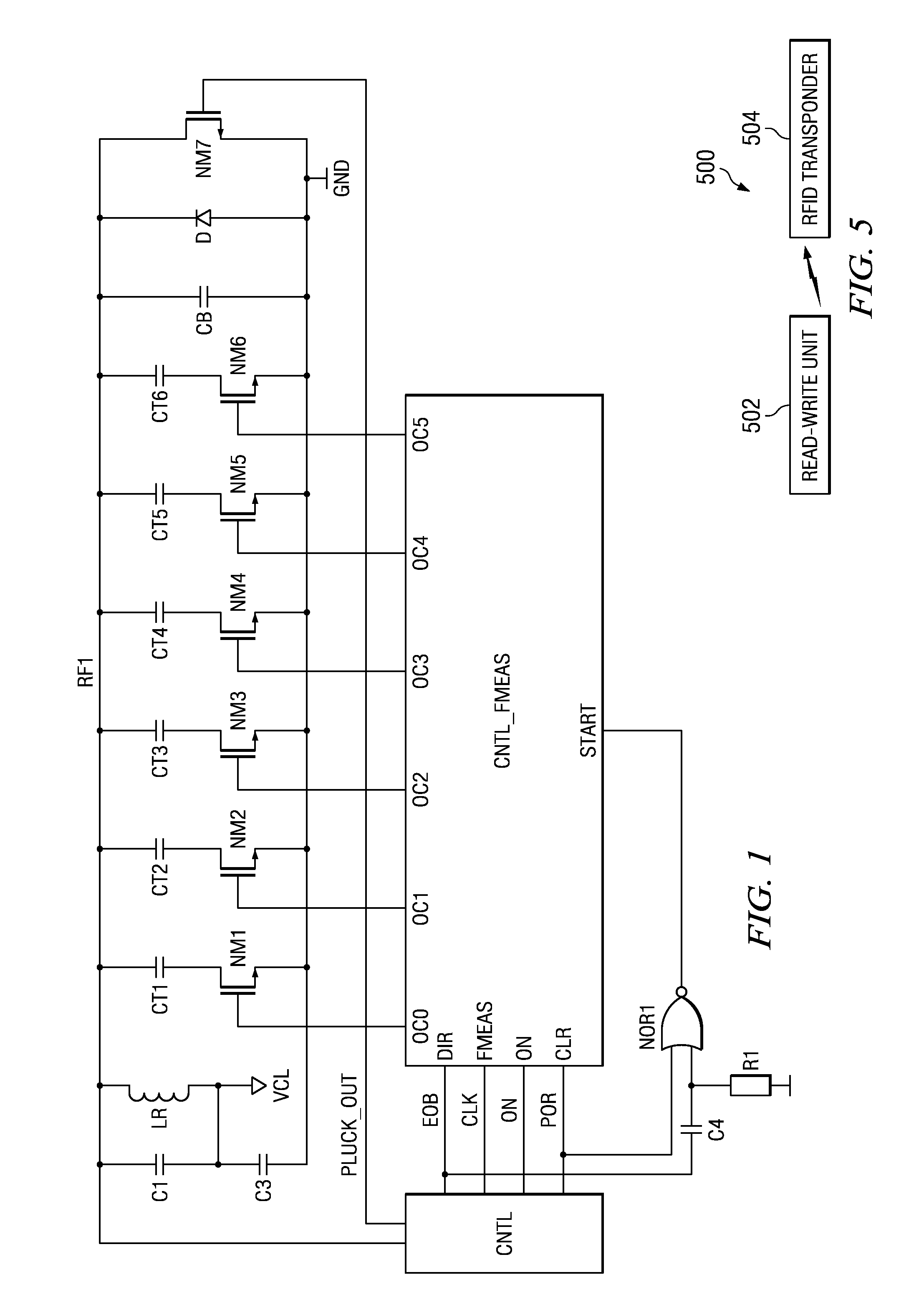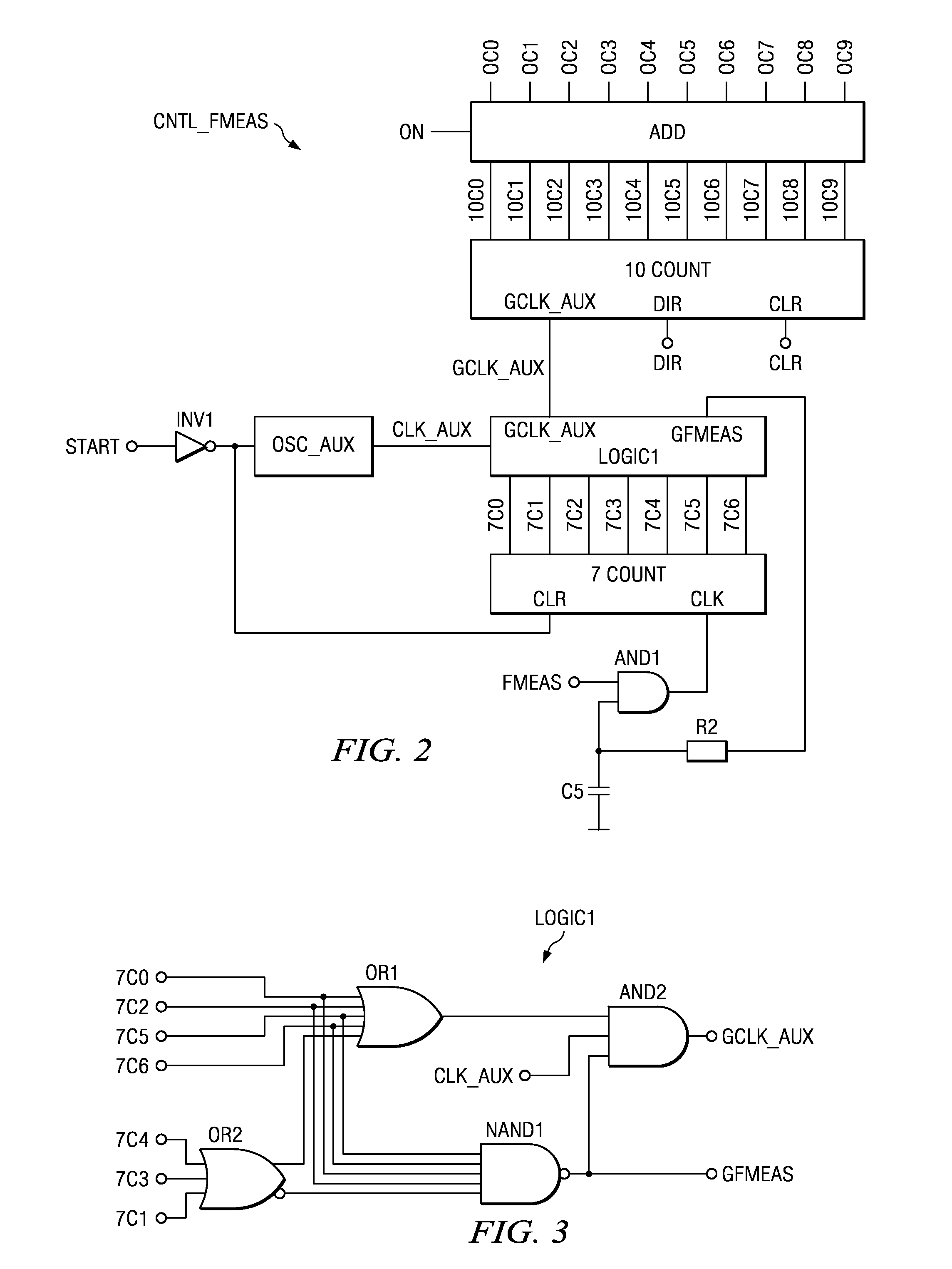Self-calbrating RFID transponder
a transponder and self-calbrating technology, applied in the field of rfid transponders, can solve the problem that the second calibration step is practically never performed, and achieve the effect of speeding up the calibration
- Summary
- Abstract
- Description
- Claims
- Application Information
AI Technical Summary
Benefits of technology
Problems solved by technology
Method used
Image
Examples
Embodiment Construction
[0018]FIG. 1 shows a simplified circuit diagram of an embodiment of the present invention. The resonant circuit comprises the resonant capacitor CR and the inductive antenna LR. The resonant circuit is coupled through capacitor C3 to ground. C3 works as buffer capacitor for VCL. There is further a diode D operating as a simple rectifier and an internal capacitor CB (CB represents a parasitic capacitor). The internal supply voltage VCL is generated if an external radio frequency signal is received through antenna LR. The received RF signal is present at node RF1. The node RF1 is coupled to the control stage CNTL. The control CNTL derives the output signals CLK, EOB, ON and POR from the signal at node RF1, i.e. the RF signal. If now external RF signal is present, the resonant circuit CR, LR is excited through transistor NM7 which is controlled by the control signal PLUCK_OUT. The control stage CNTL is a conventional control stage producing the end of burst signal EOB, the clock signal...
PUM
| Property | Measurement | Unit |
|---|---|---|
| radio frequency | aaaaa | aaaaa |
| frequency | aaaaa | aaaaa |
| frequency | aaaaa | aaaaa |
Abstract
Description
Claims
Application Information
 Login to View More
Login to View More - R&D
- Intellectual Property
- Life Sciences
- Materials
- Tech Scout
- Unparalleled Data Quality
- Higher Quality Content
- 60% Fewer Hallucinations
Browse by: Latest US Patents, China's latest patents, Technical Efficacy Thesaurus, Application Domain, Technology Topic, Popular Technical Reports.
© 2025 PatSnap. All rights reserved.Legal|Privacy policy|Modern Slavery Act Transparency Statement|Sitemap|About US| Contact US: help@patsnap.com



